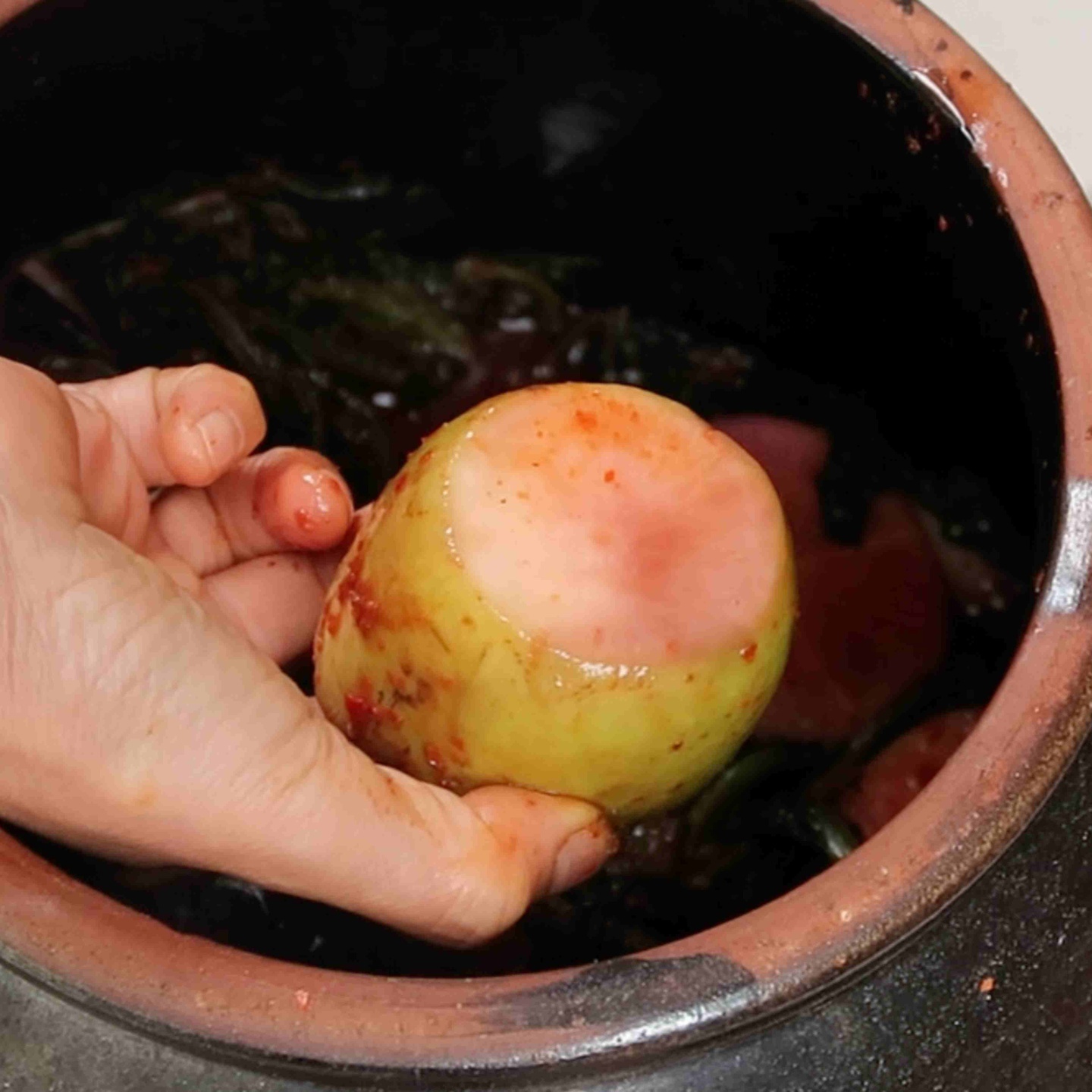The vegetables added to the Gimbap do not need to be seasoned. Their natural flavor and texture should shine.
Spinach (시금치)/Garlic Chives (부추): Spinach or chives can be substituted for each other. Blanch these vegetables in water, then drain and use.
Yellow Radish (단무지): Yellow radish is a key flavor in Gimbap; it gives a sweet tang and crunchy texture to the roll. Save the liquid it is packaged in for sealing the Gimbap.
Onion (양파): Onion can be sliced with a vegetable peeler to achieve thin slices and then stored in ice water.
Carrot (당근): Carrots should be thinly sliced and then stir-fried without any oil. Use water for stir-frying the carrots instead.
Perilla Leaves (깻잎): Perilla leaves are used in all kinds of Gimbap except classic Gimbap. They add an herb flavor, but they are also used to control any “slightly wet” ingredients that are added to the Gimbap. For example, if you add bulgogi, wrap the bulgogi in the perilla leaves like a roll, then add it to the Gimbap roll. Doing this will keep the moisture from the bulgogi contained.
Spicy Korean Pepper (청양고추): These chili peppers minced up can be added to the Gimbap to add extra spice.
Braised Burdock Root (우엉조림): Braised burdock root is another classic Gimbap ingredient.

